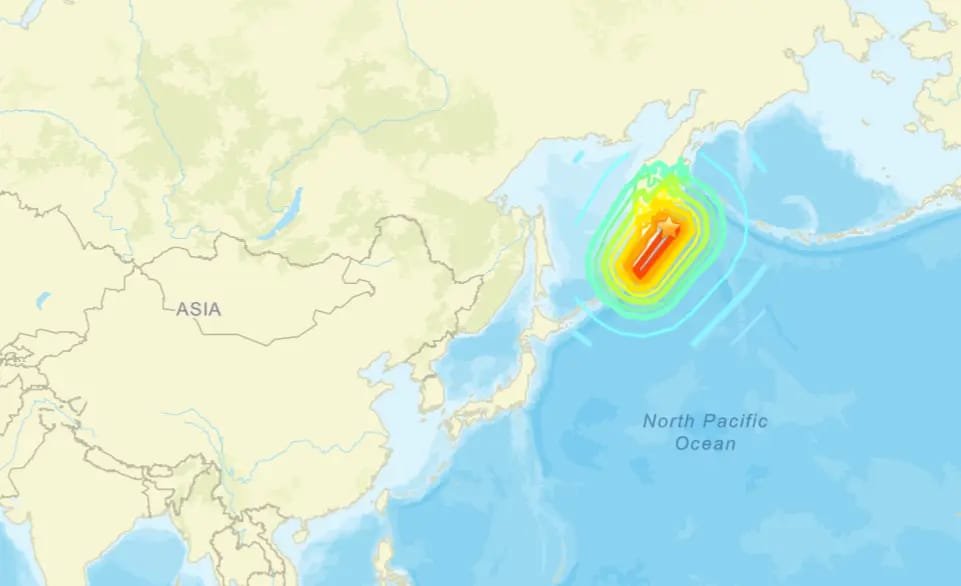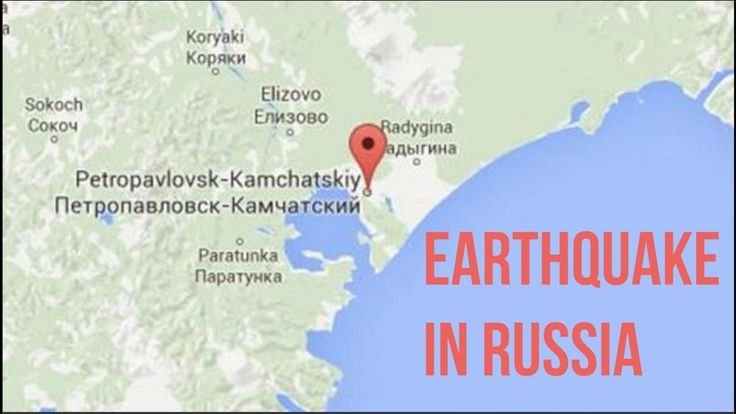Kamchatka Earthquake of 7.4 magnitude shook Russia’s Pacific coast, triggering tsunami alerts that were later lifted. Learn about the emergency response, safety tips, and why Kamchatka lies in the dangerous Pacific Ring of Fire.
What Happened in Kamchatka?
A 7.4-magnitude earthquake struck near the east coast of Russia’s Kamchatka Peninsula today, according to the U.S. Geological Survey (USGS).
The epicenter was located roughly 110 km east of Petropavlovsk-Kamchatsky at a depth of 39 km. Shaking was felt widely across the region, with residents reporting strong tremors that caused panic.
Authorities quickly issued a tsunami alert for nearby coastal areas, but this was later lifted after experts confirmed no significant sea-level rise.
Why Kamchatka Is at Risk
Kamchatka lies on the Pacific “Ring of Fire,” one of the most seismically active regions in the world. This area experiences frequent volcanic eruptions and earthquakes because of tectonic plate movement.
Shallow quakes in this region can:
- Cause powerful local shaking
- Damage older buildings and roads
- Trigger landslides on steep slopes
- In rare cases, generate dangerous tsunamis
Emergency Response and Local Impact
Officials reported no immediate fatalities or major structural damage. Emergency crews were deployed to check infrastructure, ports, and essential services.
Transportation continued running, though residents were urged to stay away from damaged or unstable structures.
Earlier, monitoring centers detected slight sea-level changes in the North Pacific, but these were confirmed as non-threatening.

Safety Recommendations After the Kamchatka Earthquake
Seismologists explained that aftershocks are common after an earthquake of this magnitude. Authorities advised people to:
- Review evacuation routes and stay updated via official announcements.
- Keep emergency kits with food, water, and medicines ready.
- Identify safe spots indoors to Drop, Cover, and Hold On during tremors.
- Stay away from coastal areas if tsunami warnings are re-issued.
Seismologists noted that aftershocks are common after quakes of this magnitude.
Preparedness recommendations include:
- Keeping emergency kits ready.
- Identifying safe drop-cover-hold locations indoors.
- Reviewing evacuation routes in coastal areas.
Global Importance of Kamchatka’s Quakes
The Kamchatka Earthquake also highlights global seismic risks. Events in this region are closely monitored because they can affect neighboring Pacific countries, shipping routes, and natural disaster preparedness strategies worldwide.International agencies continue to study these events to improve earthquake forecasting, early warning systems, and community preparedness.Historical Context
Kamchatka has experienced some of the world’s largest earthquakes in the past century. For example:
- In 1952, a massive earthquake in the region generated a devastating Pacific-wide tsunami.
- Several other quakes above magnitude 7.0 have shaken Kamchatka in recent decades.
This history explains why every Kamchatka Earthquake draws close attention from scientists and emergency planners worldwide.Final Takeaway
The 7.4-magnitude Kamchatka Earthquake serves as a strong reminder of the risks faced by communities living on the Pacific Ring of Fire. While this event did not cause catastrophic damage, it underscores the importance of preparedness, awareness, and strong infrastructure.
Residents are encouraged to stay alert for aftershocks, follow official guidance, and take steps to protect their families. Globally, scientists and governments will continue studying Kamchatka’s seismic activity to improve safety and resilience for millions of people living in earthquake-prone regions.
Conclusion
The Kamchatka earthquake of 7.4 magnitude caused fear but thankfully did not result in a large-scale disaster. The quick response of authorities and the region’s preparedness helped minimize risks. Still, the event underlines the importance of ongoing vigilance in one of the most dangerous seismic zones on Earth.
Kamchatka’s location makes it vulnerable to future earthquakes and tsunamis. Residents and officials must continue to take precautionary steps, strengthen buildings, and stay informed about safety protocols. Earthquakes cannot be prevented, but their impact can be reduced when communities stay ready.
